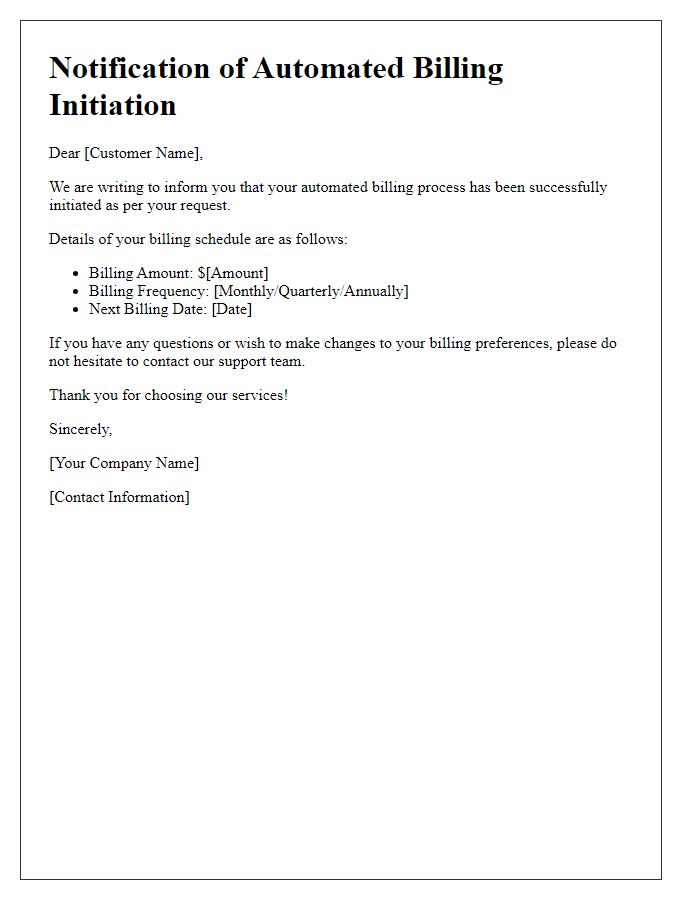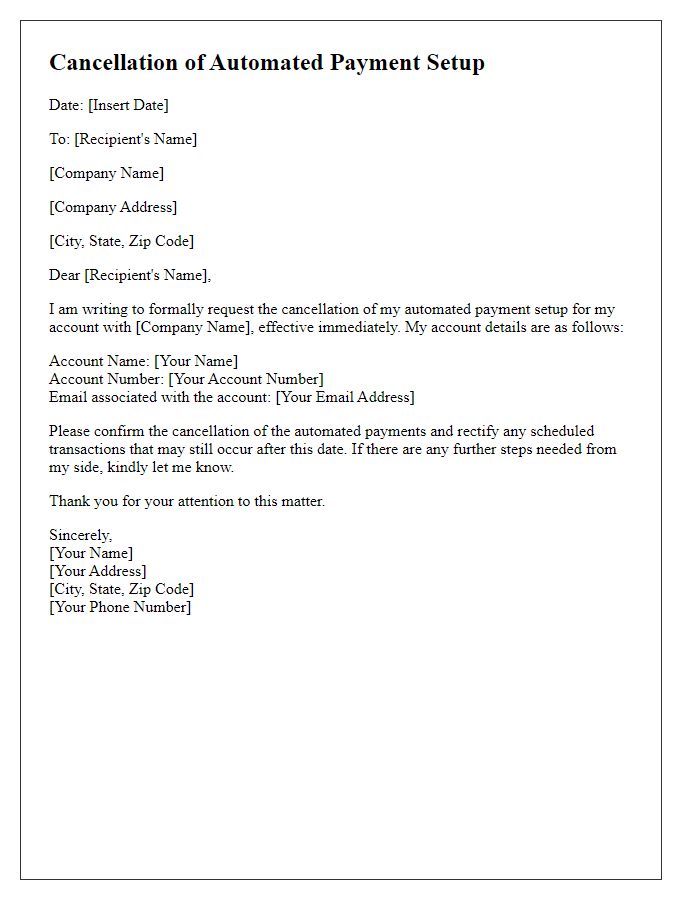Setting up an automated payment system can simplify your financial life, making it easier to manage bills and avoid late fees. Imagine never having to worry about remembering due dates again; everything can be handled seamlessly in the background. In this article, we'll guide you through the steps to create a hassle-free automated payment setup that works for you. So, let's dive in and explore how you can make your payments effortless!

Payer and Payee Information
Automated payment setups simplify the payment processes between individuals or organizations. Payer information includes essential details such as full name (John Smith), bank account number (123456789), and routing number (987654321). Payee information provides similar details with the recipient's name (XYZ Services LLC) and their account details for accurate transfers. The payment frequency, whether weekly, monthly (on the 15th), or one-time transactions, determines the schedule of automated deductions, ensuring timely payment without manual intervention. Encrypted communication channels must secure this exchange of sensitive financial information, protecting against cyber threats. Compliance with regulations such as the Electronic Funds Transfer Act enhances consumer protection and fosters trust in the automated payment system.
Payment Terms and Conditions
Automated payment setups streamline the payment process for services rendered, ensuring timely transactions while adhering to specific payment terms. Monthly billing cycles are typical, with payments due on the first of each month. Payment methods can include credit cards, bank transfers, or digital wallets, all subject to verification for security. A grace period of five business days may apply for late payments, with potential late fees of up to 5% of the outstanding balance. Notifications are sent via email for each upcoming payment and any changes in terms. Clear and concise conditions are essential to maintain trust and transparency in financial transactions.
Authorization Statement
Automated payment setups allow for seamless financial transactions, streamlining the billing process for services such as utilities, mortgage payments, or subscription services. Authorization statements, often required by companies like electric or water providers, must include vital information like bank details (account number, routing number) and the customer's consent for recurring withdrawals. Specific terms should outline the frequency of payments (monthly, quarterly), total amount authorized, and the duration of the agreement (until canceled or until a specific date). Clear communication of the cancellation process is crucial for transparency and consumer trust. Ensuring up-to-date contact information also plays a key role in maintaining effective communication regarding any changes to the payment schedule or amount.
Financial Institution Details
Automated payment setups provide a seamless way to manage recurring transactions through financial institutions, ensuring timely payments for services. Key elements include the financial institution's name, such as Wells Fargo or Bank of America, which indicates the provider of banking services. Account details, including routing number (typically a nine-digit code that identifies the bank) and account number (a unique number assigned to an individual's bank account), are critical for processing transactions accurately. Payment frequency options, such as monthly, bi-weekly, or quarterly, allow for customization based on individual financial needs, while safeguards like payment limits help mitigate risks. Additionally, consent for electronic funds transfer (EFT) is essential, as it authorizes the institution to withdraw funds directly. This setup streamlines financial management, particularly for bills such as utilities or subscriptions, enhancing efficiency and reducing late fees.
Contact Information for Queries
In the context of automated payment setups, clear contact information is essential for addressing any inquiries or problems that may arise during the transaction process. Customers should have easy access to a dedicated support team, typically a financial customer service department, available through multiple channels. A common approach includes providing a phone number, such as toll-free numbers (e.g., 1-800-555-0199), an email address (e.g., support@financialservices.com), and a live chat option on the official website. Additionally, the support hours, often Monday to Friday from 9 AM to 5 PM EST, should be specified to set appropriate expectations for response times. It's crucial to ensure that such contact details are prominently displayed in relevant documentation to foster trust and facilitate seamless communication during subscription or one-time payment processes.













Comments